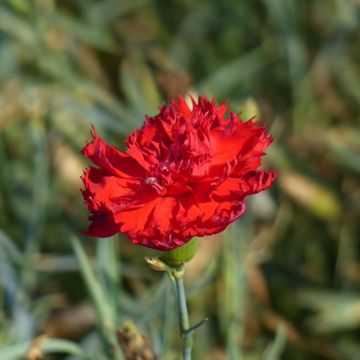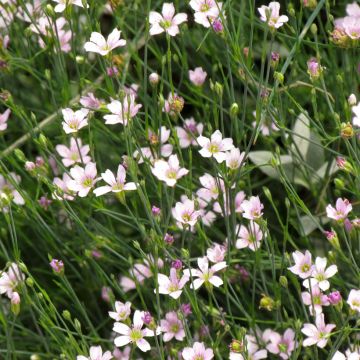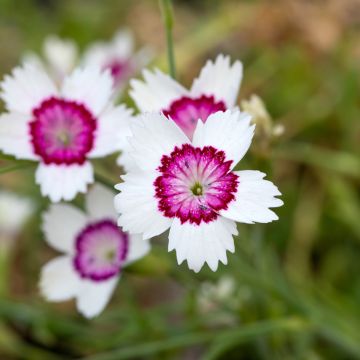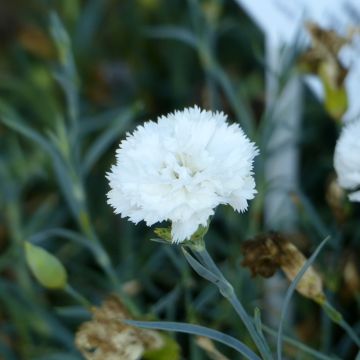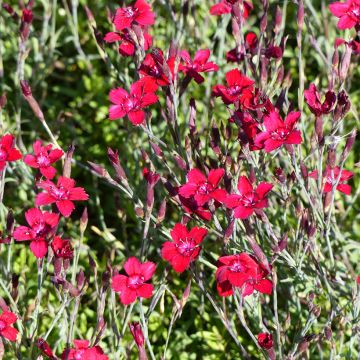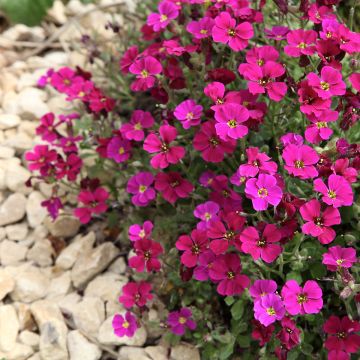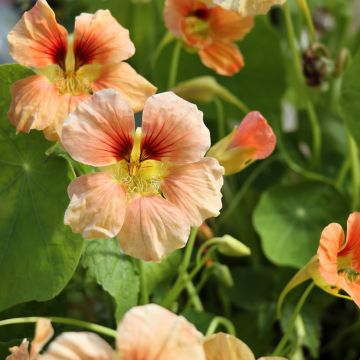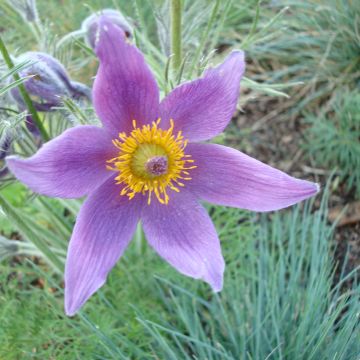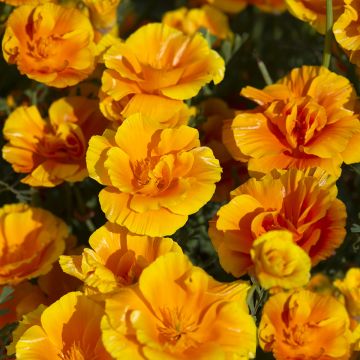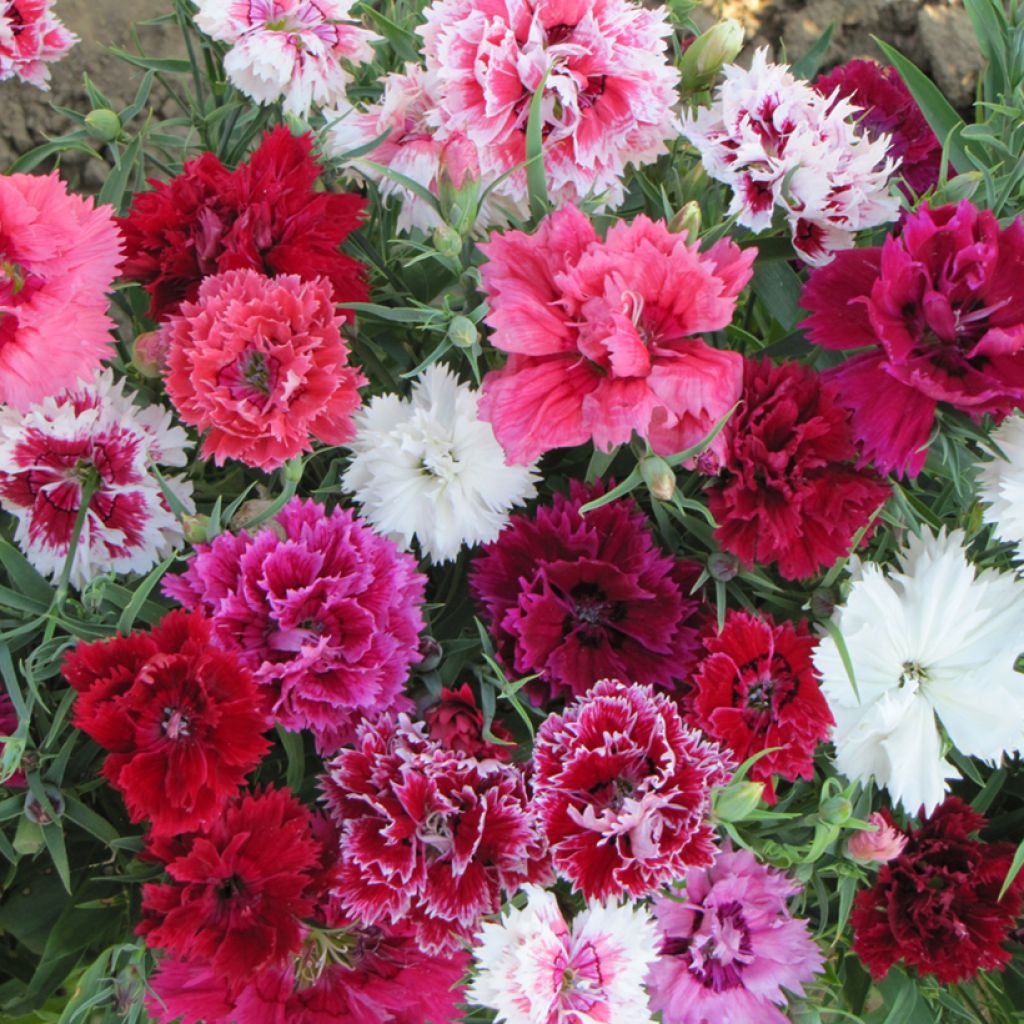

Dianthus chinensis Imperial Mix seeds - China Pink
Dianthus chinensis Imperial Mix seeds - China Pink
Dianthus chinensis Imperial Mix
Chinese Pink, China Pink, Rainbow Pink
This item cannot be shipped to the selected country
Dispatch by letter from €3.90
More information
Schedule delivery date,
and select date in basket
This plant carries a 6 months recovery warranty
More information
We guarantee the quality of our plants for a full growing cycle, and will replace at our expense any plant that fails to recover under normal climatic and planting conditions.
Seed-only orders are dispatched by sealed envelope. The delivery charge for seed-only orders is €3.90.
Does this plant fit my garden?
Set up your Plantfit profile →
Description
The China Pink 'double Imperial Mix' is a delightful selection of Dianthus chinensis. With a compact habit and cheerful colours, it produces single or variegated flowers with multiple fringed petals in shades of light pink, dark pink, salmon, white, red, and bicolour. These tender and short-lived perennial plants are mostly grown as annuals. Sown early in spring, under heated shelter, they bloom for long months in sunny borders and containers.
The 'double Imperial Mix' China Pinks belong to the Caryophyllaceae family. It is a selection derived from D. chinensis heddewigii, native to a large part of China, where it grows in meadows, steppes, and sandy dunes, at the edge of forests, as well as along watercourses. The growth of this short-lived perennial China Pink is very rapid. The mature size of the 'double Imperial Mix' selection does not exceed 40 cm in height, when flowering, with a spread of 25 cm or more. Each plant forms a small prostrate tuft with a spreading habit. Its tiny, linear, jade to bluish-green leaves, speckled with purple, are tightly packed on slender stems. The flowering begins in June and lasts until September-October if the soil is not too dry. The plant is then continuously covered with beautiful double, 3 cm wide flowers, with heavily fringed petals, in a lovely range of pink, red, salmon, and white shades. Some are solid-coloured, while others are bicolour. They have a pleasant fragrance and are usually borne singly at the top of the stems.
Plant these 'double Imperial Mix' China Pinks in an open location on a slope where they can spread in the sun. They look stunning in a rockery, on the slope of a well-drained bank, or at the top of a dry stone wall. These plants can fill the base of bushes in large pots and decorate large containers, or alpine troughs. Before planting, in heavy or clayey soils, add a few shovelfuls of gravel and coarse sand to facilitate water drainage. The China Pink pairs well with alpine or mountain plants such as alyssum, soapworts, creeping phlox (P.subulata and P.douglasii), aubrieta, candytuft, and rock roses.
Report an error about the product description
Flowering
Foliage
Plant habit
Botanical data
Dianthus
chinensis
Imperial Mix
Caryophyllaceae
Chinese Pink, China Pink, Rainbow Pink
Cultivar or hybrid
Other Dianthus seeds
Planting and care
Sow Chinese pinks from February to April.
Sow on the surface of a light and moist compost in pots or trays and cover with a thin sprinkle of compost or vermiculite. Keep at a temperature between 18-20°C. After sowing, keep in the light as this promotes germination. Keep the surface of the compost moist but not waterlogged; germination usually takes 14-30 days.
Transplant the plants, when they are large enough to handle, into 8cm pots or trays. Acclimatise them gradually to a cooler environment for a few weeks before transplanting outdoors once the risk of frost has passed. Space the plants 30cm apart.
Cultivation:
Plant Chinese pinks in ordinary, well-drained, humus-rich soil, gravelly, sandy or chalky, moist to dry and most importantly well-drained. A gravel-rich soil produces good results. This plant prefers a very sunny exposure. Only water in case of prolonged drought. Regularly remove faded flowers to encourage flowering and prolong its lifespan. However, in rocky soil, this carnation self-sows abundantly if care is taken to let some seeds mature. Lightly trim the clump after flowering to help it regrow. In poor soil, it will be useful to apply a balanced fertiliser in March. This dianthus does not like competition from invasive plants, which, if placed nearby, can make it disappear by imposing too much shade.
Sowing period
Intended location
This item has not been reviewed yet - be the first to leave a review about it.
Flower seeds
Haven't found what you were looking for?
Hardiness is the lowest winter temperature a plant can endure without suffering serious damage or even dying. However, hardiness is affected by location (a sheltered area, such as a patio), protection (winter cover) and soil type (hardiness is improved by well-drained soil).

Photo Sharing Terms & Conditions
In order to encourage gardeners to interact and share their experiences, Promesse de fleurs offers various media enabling content to be uploaded onto its Site - in particular via the ‘Photo sharing’ module.
The User agrees to refrain from:
- Posting any content that is illegal, prejudicial, insulting, racist, inciteful to hatred, revisionist, contrary to public decency, that infringes on privacy or on the privacy rights of third parties, in particular the publicity rights of persons and goods, intellectual property rights, or the right to privacy.
- Submitting content on behalf of a third party;
- Impersonate the identity of a third party and/or publish any personal information about a third party;
In general, the User undertakes to refrain from any unethical behaviour.
All Content (in particular text, comments, files, images, photos, videos, creative works, etc.), which may be subject to property or intellectual property rights, image or other private rights, shall remain the property of the User, subject to the limited rights granted by the terms of the licence granted by Promesse de fleurs as stated below. Users are at liberty to publish or not to publish such Content on the Site, notably via the ‘Photo Sharing’ facility, and accept that this Content shall be made public and freely accessible, notably on the Internet.
Users further acknowledge, undertake to have ,and guarantee that they hold all necessary rights and permissions to publish such material on the Site, in particular with regard to the legislation in force pertaining to any privacy, property, intellectual property, image, or contractual rights, or rights of any other nature. By publishing such Content on the Site, Users acknowledge accepting full liability as publishers of the Content within the meaning of the law, and grant Promesse de fleurs, free of charge, an inclusive, worldwide licence for the said Content for the entire duration of its publication, including all reproduction, representation, up/downloading, displaying, performing, transmission, and storage rights.
Users also grant permission for their name to be linked to the Content and accept that this link may not always be made available.
By engaging in posting material, Users consent to their Content becoming automatically accessible on the Internet, in particular on other sites and/or blogs and/or web pages of the Promesse de fleurs site, including in particular social pages and the Promesse de fleurs catalogue.
Users may secure the removal of entrusted content free of charge by issuing a simple request via our contact form.
The flowering period indicated on our website applies to countries and regions located in USDA zone 8 (France, the United Kingdom, Ireland, the Netherlands, etc.)
It will vary according to where you live:
- In zones 9 to 10 (Italy, Spain, Greece, etc.), flowering will occur about 2 to 4 weeks earlier.
- In zones 6 to 7 (Germany, Poland, Slovenia, and lower mountainous regions), flowering will be delayed by 2 to 3 weeks.
- In zone 5 (Central Europe, Scandinavia), blooming will be delayed by 3 to 5 weeks.
In temperate climates, pruning of spring-flowering shrubs (forsythia, spireas, etc.) should be done just after flowering.
Pruning of summer-flowering shrubs (Indian Lilac, Perovskia, etc.) can be done in winter or spring.
In cold regions as well as with frost-sensitive plants, avoid pruning too early when severe frosts may still occur.
The planting period indicated on our website applies to countries and regions located in USDA zone 8 (France, United Kingdom, Ireland, Netherlands).
It will vary according to where you live:
- In Mediterranean zones (Marseille, Madrid, Milan, etc.), autumn and winter are the best planting periods.
- In continental zones (Strasbourg, Munich, Vienna, etc.), delay planting by 2 to 3 weeks in spring and bring it forward by 2 to 4 weeks in autumn.
- In mountainous regions (the Alps, Pyrenees, Carpathians, etc.), it is best to plant in late spring (May-June) or late summer (August-September).
The harvesting period indicated on our website applies to countries and regions in USDA zone 8 (France, England, Ireland, the Netherlands).
In colder areas (Scandinavia, Poland, Austria...) fruit and vegetable harvests are likely to be delayed by 3-4 weeks.
In warmer areas (Italy, Spain, Greece, etc.), harvesting will probably take place earlier, depending on weather conditions.
The sowing periods indicated on our website apply to countries and regions within USDA Zone 8 (France, UK, Ireland, Netherlands).
In colder areas (Scandinavia, Poland, Austria...), delay any outdoor sowing by 3-4 weeks, or sow under glass.
In warmer climes (Italy, Spain, Greece, etc.), bring outdoor sowing forward by a few weeks.


































